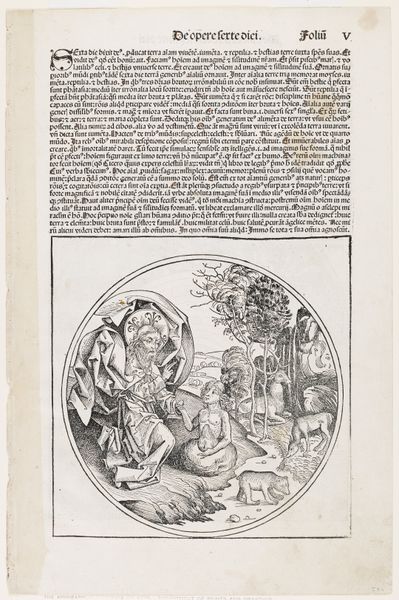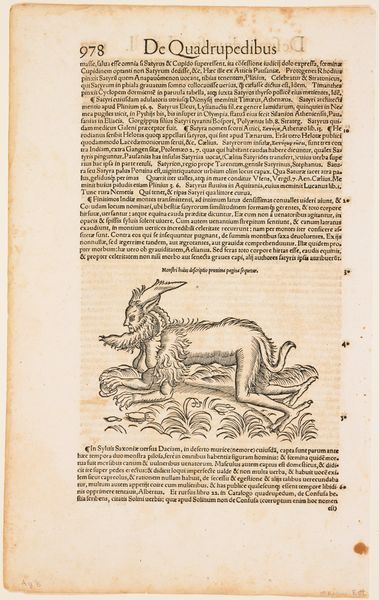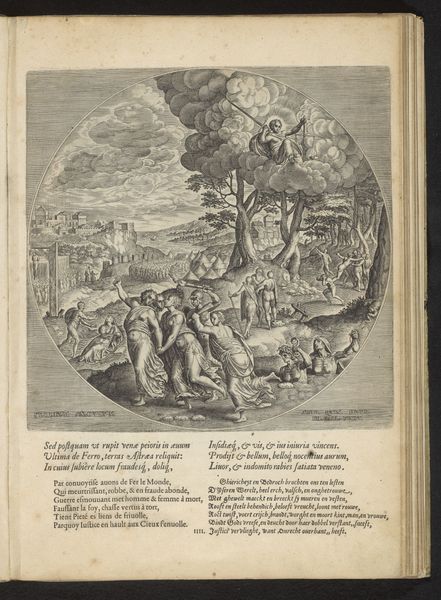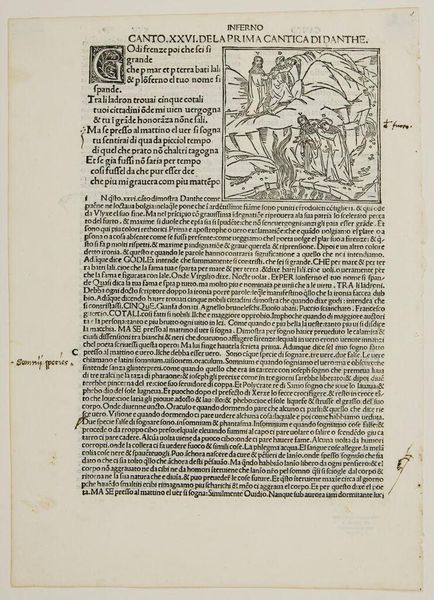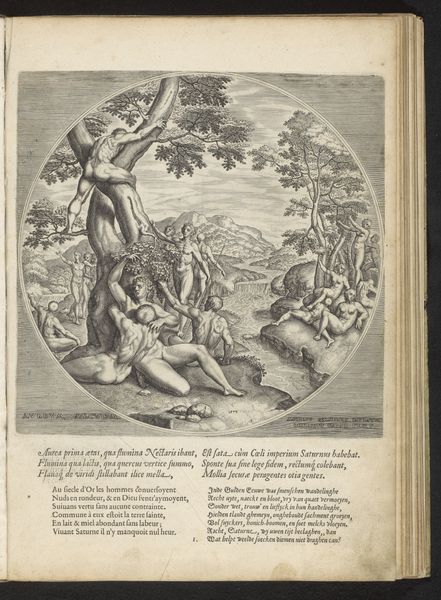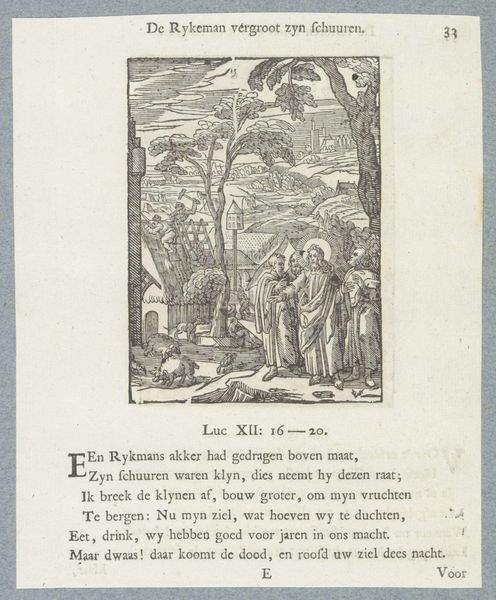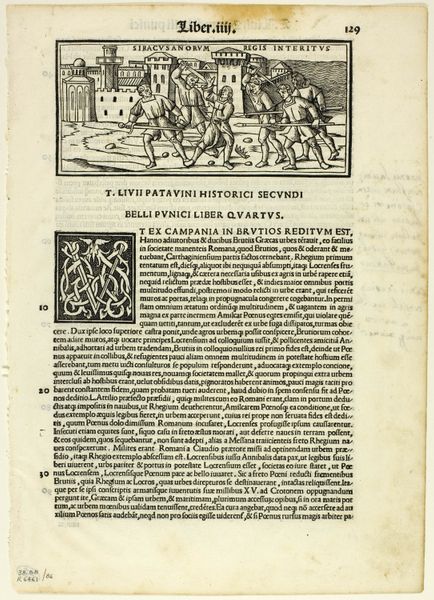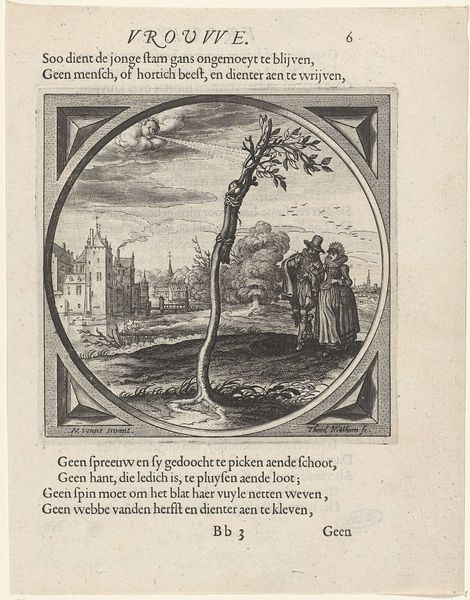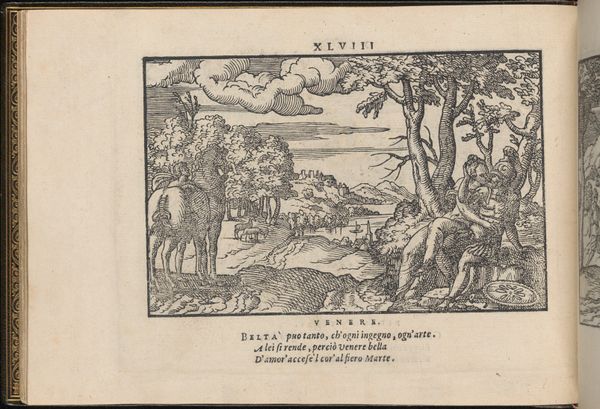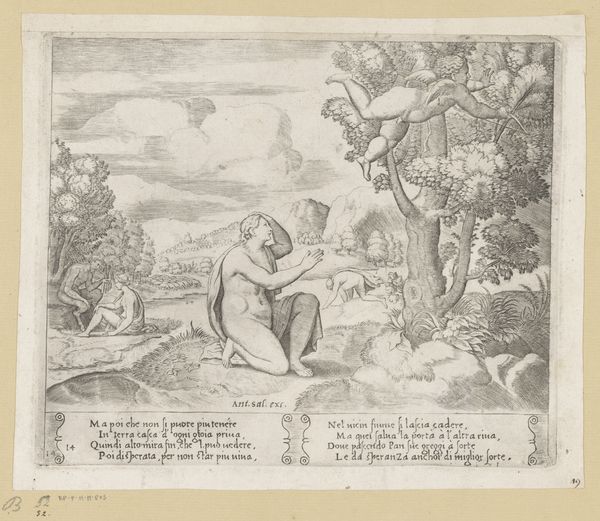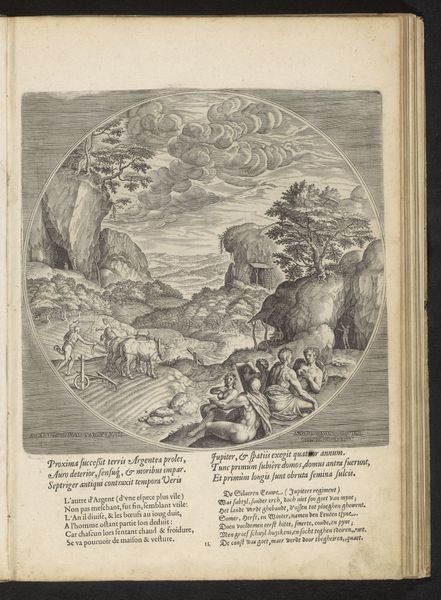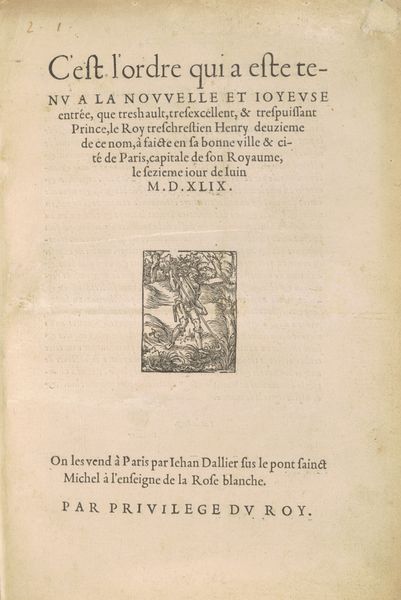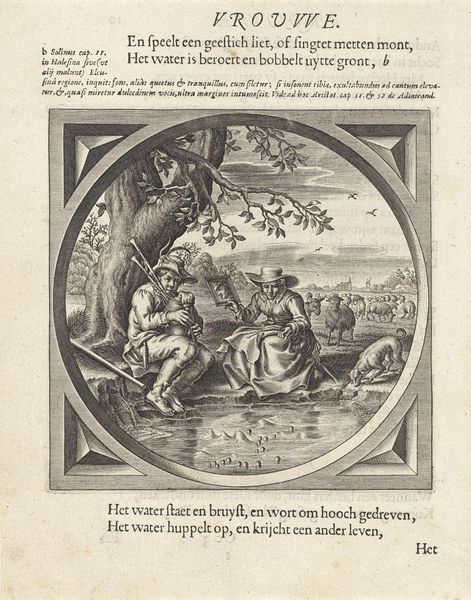
drawing, print, woodcut, engraving
#
drawing
#
medieval
#
germany
#
narrative-art
# print
#
landscape
#
figuration
#
woodcut
#
line
#
northern-renaissance
#
engraving
Dimensions: 14 1/2 x 8 3/4 in. (36.83 x 22.23 cm) (image)
Copyright: Public Domain
In this woodcut, Michael Wolgemut visualizes the fourth day of creation. It's an illustration from the Nuremberg Chronicle, a vast historical and geographical book published in 1493, during a time of immense religious and intellectual change. Wolgemut reflects the period's understanding of the natural world, blending religious narrative with emerging scientific inquiry. The image depicts God's creation of birds and aquatic creatures, showcasing the era’s fascination with natural history and the desire to classify and understand the world. But it’s not just about documenting creation. The detailed rendering of animals and landscapes also speaks to a changing relationship with nature itself. There's a sense of wonder, but also an urge to dominate and categorize. These depictions often served to reinforce existing social hierarchies, positioning humans as the pinnacle of creation. The emotional resonance of the artwork lies in this tension between reverence and control, reflecting a society grappling with its place in the cosmos and its relationship to the environment.
Comments
minneapolisinstituteofart almost 2 years ago
⋮
Next to the Gutenberg Bible, the Nuremberg Chronicle was the publishing event of the century. It was no less than a history of the world, beginning with Creation. The Fifth Day shows the arrival of creatures, including one owl rather immune to the august moment. The Sixth Day shows God creating Adam from a mound of clay, his cape swirling like a wheel. The humanist circle involved in publishing the Nuremberg Chronicle would have known Augustine, who had written about the Apostle Paul's reference to God as a potter and to humans as clay (Romans 9).
Join the conversation
Join millions of artists and users on Artera today and experience the ultimate creative platform.
